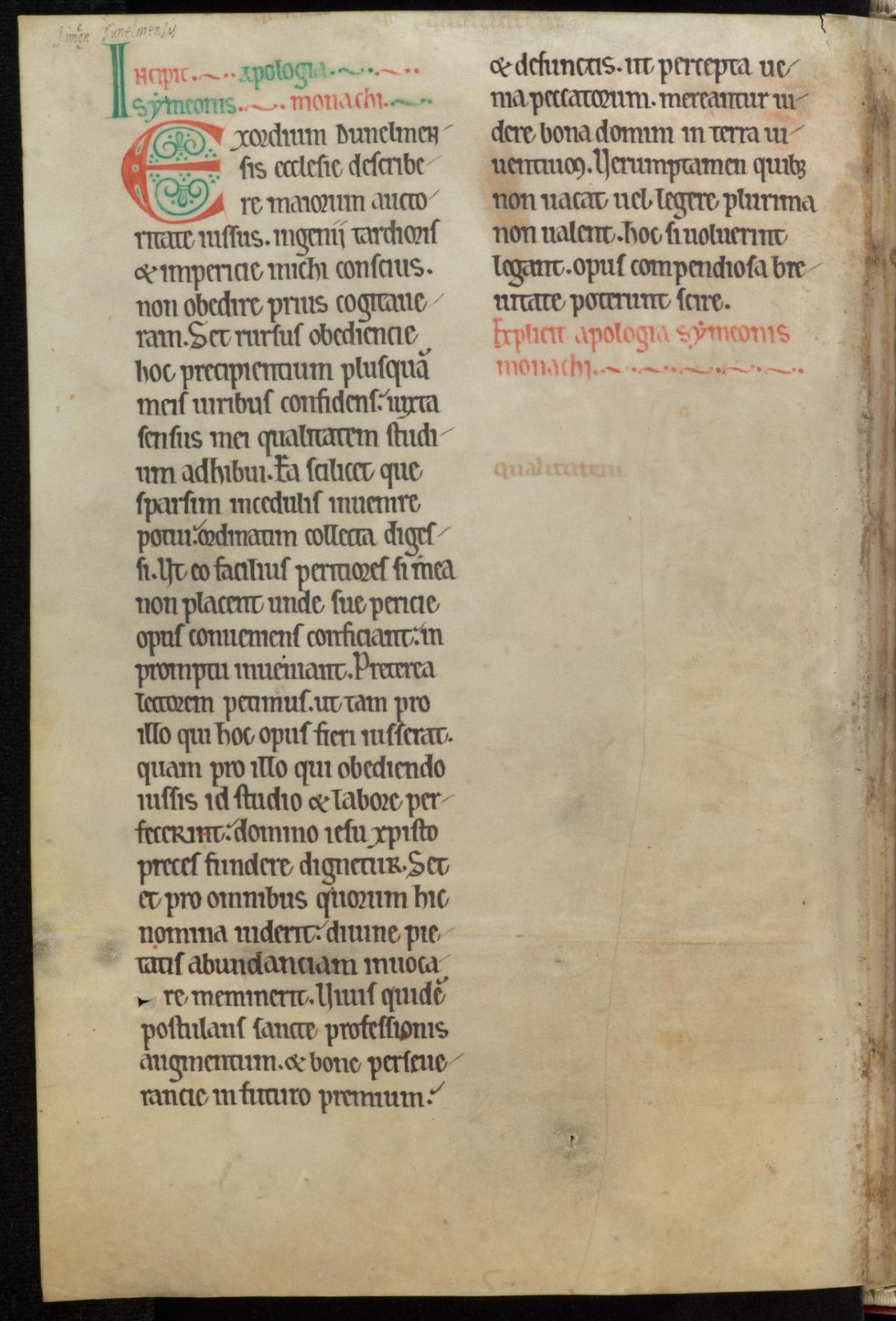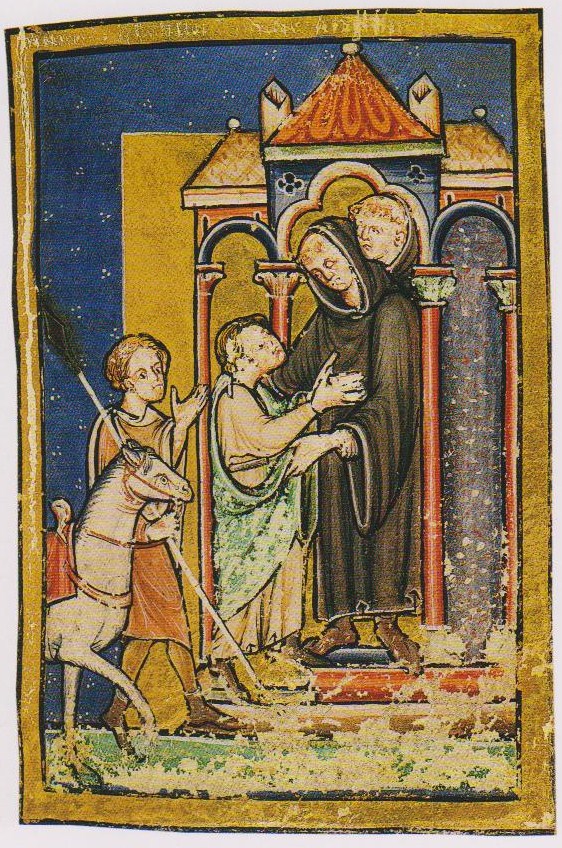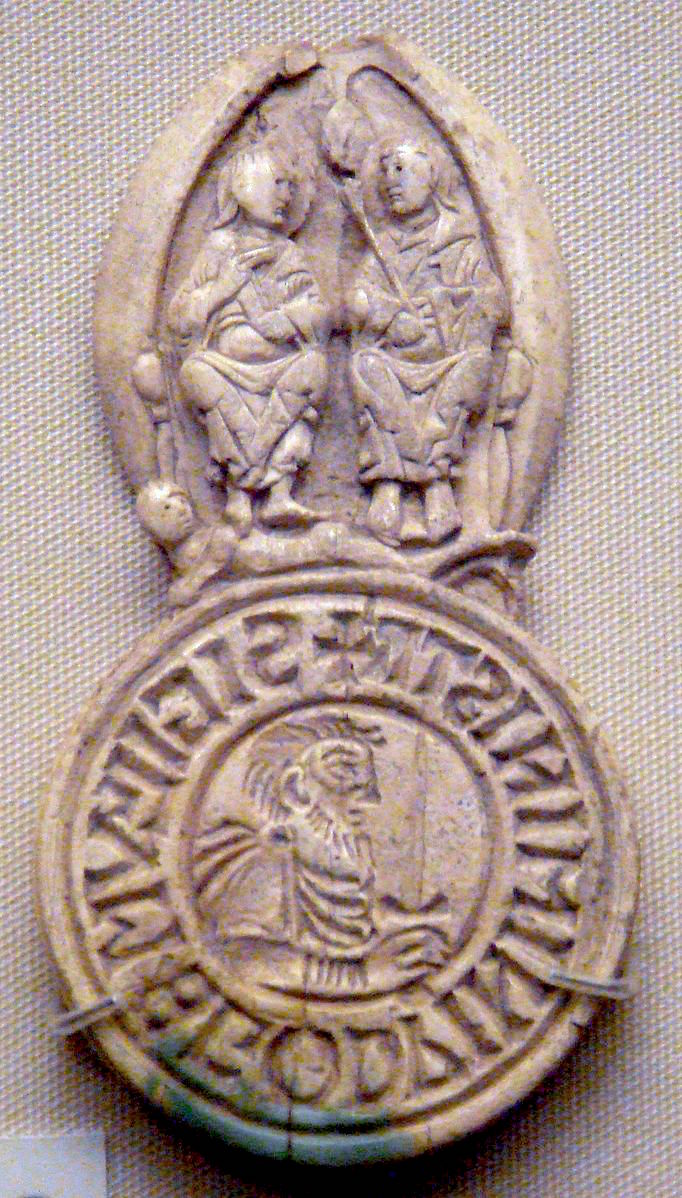|
Thurbrand The Hold
Thurbrand (; 1010s; died 1024), nicknamed "the Hold", was a Northumbrian magnate in the early 11th century. Perhaps based in Holderness and East Yorkshire, Thurbrand was recorded as the killer of Uhtred the Bold, Earl of Northumbria. The killing appears to have been part of the war between Sweyn Forkbeard and Cnut the Great against the English king Æthelred the Unready, Uhtred being the latter's chief Northumbrian supporter. Thurbrand may also have attested a charter of 1009 and given a horse to Æthelred's son Æthelstan Ætheling. The killing is the first-known act, if it did not initiate, a bloodfeud between Thurbrand's family and Uhtred going into the time of Earl Waltheof. It is possible that Holderness took its name because of Thurbrand's presence or ownership of the peninsula. Background Thurbrand's ''floruit'' lay in the reigns of Æthelred (978–1016), Sweyn Forkbeard (1013–1014) and Cnut (1016–1035). The ''Historia Regum'' and ''Chronicle'' of John of Worce ... [...More Info...] [...Related Items...] OR: [Wikipedia] [Google] [Baidu] |
Northumbria
Northumbria () was an early medieval Heptarchy, kingdom in what is now Northern England and Scottish Lowlands, South Scotland. The name derives from the Old English meaning "the people or province north of the Humber", as opposed to the Southumbria, people south of the Humber, Humber Estuary. What was to become Northumbria started as two kingdoms, Deira in the south and Bernicia in the north. Conflict in the first half of the seventh century ended with the murder of the last king of Deira in 651, and Northumbria was thereafter unified under Bernician kings. At its height, the kingdom extended from the Humber, Peak District and the River Mersey on the south to the Firth of Forth on the north. Northumbria ceased to be an independent kingdom in the mid-tenth century when Deira was conquered by the Danelaw, Danes and formed into the Kingdom of York. The rump Earl of Northumbria, Earldom of Bamburgh maintained control of Bernicia for a period of time; however, the area north of R ... [...More Info...] [...Related Items...] OR: [Wikipedia] [Google] [Baidu] |
John Of Worcester
John of Worcester (died c. 1140) was an English monk and chronicler who worked at Worcester Priory. He is now usually held to be the author of the . Works John of Worcester's principal work was the (Latin for "Chronicle from Chronicles") or ''Chronicle of Chronicles'' (), also known as John of Worcester's Chronicle or Florence of Worcester's Chronicle. The is a world history which begins with the Creation and ends in 1140. The chronological framework of the was presented by the chronicle of Marianus Scotus (d. 1082). A great deal of additional material, particularly relating to English history, was grafted onto it. Authorship The greater part of the work, up to 1117 or 1118, was formerly attributed to Florence of Worcester on the basis of the entry for his death under the year 1118, which credits his skill and industry for making the chronicle such a prominent work. In this view, the other Worcester monk, John, merely wrote the final part of the work. However, there are ... [...More Info...] [...Related Items...] OR: [Wikipedia] [Google] [Baidu] |
Libellus De Exordio
The ''Libellus de exordio atque procursu istius, hoc est Dunhelmensis, ecclesie'' (), in short ''Libellus de exordio'', is a historical work of marked literary character composed and compiled in the early 12th-century and traditionally attributed to Symeon of Durham. It relates the history of bishopric and church of Durham and its predecessors at Lindisfarne and Chester-le-Street (''Cunecacestre''). It is sometimes also known as the ''Historia Dunelmensis ecclesiae'' (English: '' History of the Church of Durham''). Manuscripts The following is a list of manuscripts containing the text. Each manuscript has its own history, and contains different interpolations and notes. In brackets is the letter or letters used by Rollason, its latest editor, to refer to the manuscript in shorthand: * ''Durham, University Library, Cosin V.II.6'', (C) * ''London, British Library, Cotton Faustina A.V'', (F) * '' Cambridge University Library, Ff. i.27'', (Ca) * ''Durham, Durham Cathedral Library, ... [...More Info...] [...Related Items...] OR: [Wikipedia] [Google] [Baidu] |
Historia De Sancto Cuthberto
The ''Historia de Sancto Cuthberto'' ("History of St Cuthbert") is a historical compilation finished some time after 1031. It is an account of the history of the bishopric of St Cuthbert—based successively at Lindisfarne, Norham, Chester-le-Street and finally Durham—from the life of St Cuthbert himself onwards. The latest event documented is a grant by King Cnut, c. 1031. The work is a cartulary chronicle recording grants and losses of property as well as miracles of retribution, under a loose narrative of temporal progression. The text survives in three manuscripts, the earliest of which dates from around 1100. The original version of the text is not thought to be extant; rather, all surviving manuscripts are thought to be copies of an earlier but lost exemplar. The ''Historia'' is one of the sources for the histories produced at Durham in the early 12th century, particularly the ''Historia Regum'' and Symeon of Durham's ''Libellus de Exordio''. Manuscripts There are thre ... [...More Info...] [...Related Items...] OR: [Wikipedia] [Google] [Baidu] |
York
York is a cathedral city in North Yorkshire, England, with Roman Britain, Roman origins, sited at the confluence of the rivers River Ouse, Yorkshire, Ouse and River Foss, Foss. It has many historic buildings and other structures, such as a York Minster, minster, York Castle, castle and York city walls, city walls, all of which are Listed building, Grade I listed. It is the largest settlement and the administrative centre of the wider City of York district. It is located north-east of Leeds, south of Newcastle upon Tyne and north of London. York's built-up area had a recorded population of 141,685 at the 2021 United Kingdom census, 2021 census. The city was founded under the name of Eboracum in AD 71. It then became the capital of Britannia Inferior, a province of the Roman Empire, and was later the capital of the kingdoms of Deira, Northumbria and Jórvík, Scandinavian York. In the England in the Middle Ages, Middle Ages it became the Province of York, northern England ... [...More Info...] [...Related Items...] OR: [Wikipedia] [Google] [Baidu] |
ætheling
Ætheling (; also spelt aetheling, atheling or etheling) was an Old English term (''æþeling'') used in Anglo-Saxon England to designate princes of the royal dynasty who were eligible for the kingship. The term is an Old English and Old Saxon compound of ''aethele'', ''æþele'' or ''(a)ethel'', meaning "noble family", and ''-ing'', which means "belonging to". It was usually rendered in Latin as ''filius regis'' (king's son) or the Anglo-Latin neologism ''clito''. Ætheling can be found in the Suffolk toponymy, toponym of Athelington. Meaning and use in Anglo-Saxon England During the earliest years of the Anglo-Saxon rule in England, the word ''ætheling'' was probably used to denote any person of noble birth. Its use was soon restricted to members of a royal family. The prefix ''æþel-'' formed part of the name of several List of Anglo-Saxon monarchs and kingdoms, Anglo-Saxon kings, for instance Æthelberht of Kent, Æthelwulf of Wessex and Æthelred of Wessex, and was u ... [...More Info...] [...Related Items...] OR: [Wikipedia] [Google] [Baidu] |
Derbyshire
Derbyshire ( ) is a ceremonial county in the East Midlands of England. It borders Greater Manchester, West Yorkshire, and South Yorkshire to the north, Nottinghamshire to the east, Leicestershire to the south-east, Staffordshire to the south and west, and Cheshire to the west. Derby is the largest settlement, and Matlock is the county town. The county has an area of and a population of 1,053,316. The east of the county is more densely populated than the west, and contains the county's largest settlements: Derby (261,400), Chesterfield (88,483), and Swadlincote (45,000). For local government purposes Derbyshire comprises a non-metropolitan county, with eight districts, and the Derby unitary authority area. The East Midlands Combined County Authority includes Derbyshire County Council and Derby City Council. The north and centre of Derbyshire are hilly and contain the southern end of the Pennines, most of which are part of the Peak District National Park. They include Kinde ... [...More Info...] [...Related Items...] OR: [Wikipedia] [Google] [Baidu] |
Charter
A charter is the grant of authority or rights, stating that the granter formally recognizes the prerogative of the recipient to exercise the rights specified. It is implicit that the granter retains superiority (or sovereignty), and that the recipient admits a limited (or inferior) status within the relationship, and it is within that sense that charters were historically granted, and it is that sense which is retained in modern usage of the term. In early medieval Britain, charters transferred land from donors to recipients. The word entered the English language from the Old French ', via -4; we might wonder whether there's a point at which it's appropriate to talk of the beginnings of French, that is, when it wa ... ', via Latin ', and ultimately from Ancient Greek">Greek (', meaning "layer of papyrus"). It has come to be synonymous with a document that sets out a grant of rights or privileges. Other usages The term is used for a special case (or as an exception) of an ... [...More Info...] [...Related Items...] OR: [Wikipedia] [Google] [Baidu] |
Ealdorman
Ealdorman ( , ) ''Collins English Dictionary''. was an office in the Government in Anglo-Saxon England, government of Anglo-Saxon England. During the 11th century, it evolved into the title of earl. Early use The Old English word ''ealdorman'' was applied to high-ranking men. It was equated with several Latin titles, including , , , and . The title could be applied to kings of weaker territories who had submitted to a greater power. For example, a Anglo-Saxon charters, charter of King Offa of Mercia described Ealdred of Hwicce as "''Ecgberht, King of Wessex#Subregulus, subregulus''... ''et dux'' ()." In Wessex, the king appointed ealdormen to lead individual shires. Under Alfred the Great (), there were nine or ten ealdormen. Each West Saxon shire had one, and Kent had two (one for East Kent and o ...[...More Info...] [...Related Items...] OR: [Wikipedia] [Google] [Baidu] |
Thegn
In later Anglo-Saxon England, a thegn or thane (Latin minister) was an aristocrat who ranked at the third level in lay society, below the king and ealdormen. He had to be a substantial landowner. Thanage refers to the tenure by which lands were held by a thane as well as the rank; an approximately equivalent modern title may be that of baron. The term ''thane'' was also used in Early Middle Ages, early medieval Scandinavia for a class of retainers, and ''thane (Scotland), thane'' was a title given to local royal officials in medieval eastern Scotland, equivalent in rank to the child of an earl. Etymology ''Thegn'' is only used once in the laws before the reign of King Æthelstan (924–939), but more frequently in charters. Apparently unconnected to the German language, German and Dutch language, Dutch word '' '' ('to serve'), H. M. Chadwick suggests "the sense of subordination must have been inherent... from the earliest time". It gradually expanded in meaning and use, to ... [...More Info...] [...Related Items...] OR: [Wikipedia] [Google] [Baidu] |
High-reeve
High-reeve () was a title taken by some Anglo-Saxon, English magnates during the 10th and 11th centuries, and is particularly associated with the Earls, ealdormen and high-reeves of Bamburgh, rulers of Bamburgh. It was not however only used by rulers of Bamburgh; many other places used the title; e.g. there was an Ordulf "High-Reeve of Dumnonia". The first reference to a ''high-reeve'' was perhaps in the third code of Edmund I of England, where there is an official known as a ''summus praepositus''.Williams, ''Æthelred the Unready'', p. 64 Alfred Smyth thought ''heah-gerefa'' was influenced by the Scottish word ''mormaer'', the meaning of which, supposedly ''great steward'', is possibly similar. In the ''North People's Law'', a high-reeve is given a wergild of four thousand thrymsas, the same as a hold (title), hold and half the wergild of an ealdorman.Seebohm, ''Tribal Custom in Anglo-Saxon Law'', p. 363North People's Law (Halsall)/ref> Ann Williams believes that the High-Reeve ... [...More Info...] [...Related Items...] OR: [Wikipedia] [Google] [Baidu] |



